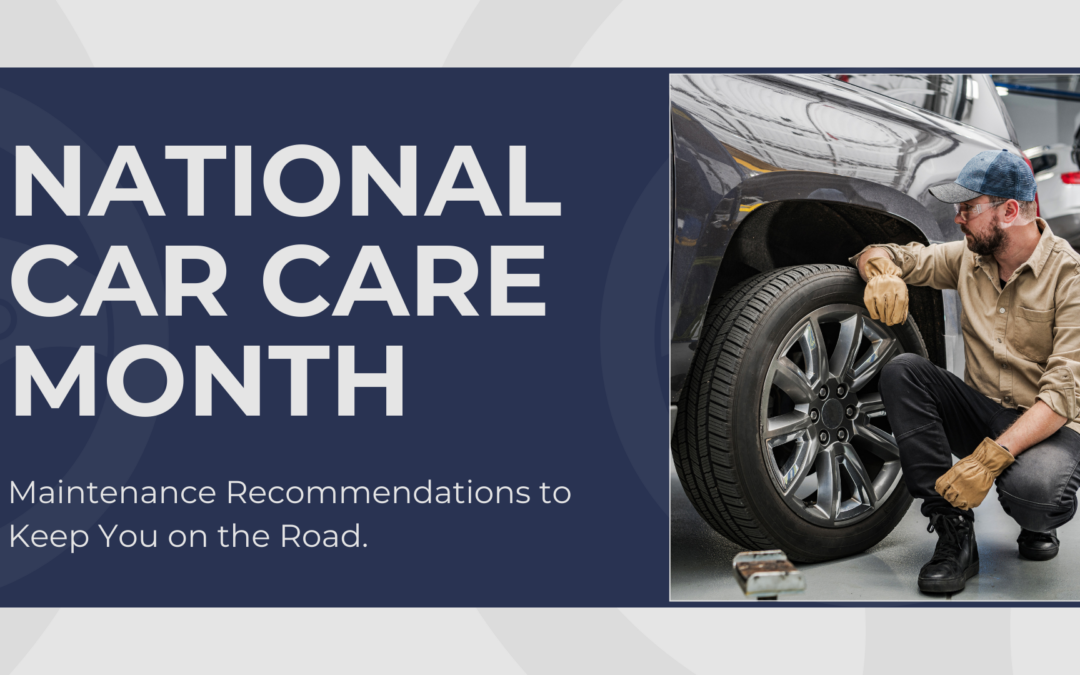Did you know? April is National Car Care Month! The harsh conditions of winter, including freezing temperatures, potholes, and road salt, can take a toll on vehicles. After a long and cold winter season, it’s a good idea to inspect your car before you have to make a car insurance claim.
Here are some steps car insurance companies suggest you can take to ensure your car continues to operate safely and efficiently:
Check your tires.
Regular driving can be hard on tires, and hazards like potholes and road debris can cause damage quickly. Routine inspection can help prevent sudden tire failure. Look for issues like cracks, bulges, or embedded objects such as nails, screws, glass, or stones. If an object punctures the tire’s sidewall, a replacement is necessary. Also, remember to check the tire pressure. You can find the recommended pressure on a sticker located on the driver’s side door frame. Under-inflated tires can lead to:
- Poor handling
- Tire blowouts
- Increased wear
Rotate your tires.
Maintaining even wear across your tires will help them last longer. Additionally, a good tread pattern is important for channeling water and snow away from the tire, which helps maintain traction. Tire rotation is a relatively simple task that should be performed every 6,000 to 8,000 miles. However, remembering the correct intervals can be challenging. Here are some tips to help you keep track:
- Use your car’s computer: Some vehicles have systems that track this. If your car alerts you, schedule a rotation.
- Coordinate with oil changes: If you get your oil changed every 3,000 miles, rotate your tires with every other oil change.
- Rely on your dealership: If you have your car serviced at the dealership, they will typically track and rotate your tires at the recommended times.
- Set a time-based reminder: If your oil change intervals are longer, aim to rotate your tires every six months.
Get your brakes checked.
When you have your tires rotated, it’s a good opportunity to have a mechanic inspect your brakes. They can examine components like brake pads, rotors, linings, and drums and inform you of any potential problems. Regular brake checks can help you avoid unexpected and costly repairs.
Replace your windshield wiper blades.
Depending on your location’s climate, wiper blades generally last between six and twelve months. Replacing them on a pleasant day in your garage or driveway is ideal. Unfortunately, many drivers wait until they are caught in bad weather to replace them.
Check your lights.
Ensure that all of your vehicle’s lights are functioning correctly. Replace any burned-out bulbs immediately, as this is crucial for your safety and the safety of other drivers.
Test your battery.
If your car battery is more than three years old, it’s wise to have it tested. Many auto parts stores offer this service for free. Being proactive can help prevent unexpected breakdowns.
Inspect the undercarriage of your vehicle.
Driving over potholes and exposure to snow, ice, and road salt can cause damage to your car’s steering and suspension systems.
Taking the time to perform these relatively simple car care tasks, especially after a cold winter, can significantly contribute to your vehicle’s safety, efficiency, and longevity. Which in turn, helps you avoid having to deal with car insurance claims. By proactively addressing potential issues with tires, brakes, lights, and other key components, you can ensure a smoother and more reliable driving experience throughout the year.

